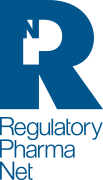The algorithm used by the Italian Medicines Agency (Agenzia Italiana del Farmaco, AIFA) to assess the innovation of medicinal products (for companies explicitly asking for the acknowledgment of innovation) is based on three evaluation criteria:
- Therapeutic need;
- Added therapeutic value;
- Quality of evidence.
Therapeutic Need. The therapeutic need evaluation determines the availability of other therapies for that disease and the extent to which a new therapy is needed for that patient population. It can be graded through five levels, from maximum (no therapeutic options for that specific indication exists) to absent (alternative treatments for that indication that modify disease outcomes and have a favorable safety profile are available). The manufacturer proposes a level of unmet therapeutic need to AIFA and must describe the rationale for their choice.
Added Therapeutic Value. The added therapeutic value is the magnitude of clinical benefit provided by the new drug compared to available alternatives, if any exists. The outcomes must be clinically relevant and validated for the indication. Demonstrating added therapeutic value compared to other available therapies is particularly important in the treatment of diseases that are potentially fatal, that cause repeated hospitalizations, or that cause disability or significantly impaired quality of life. As with unmet therapeutic need, the added therapeutic value is measured on a scale from maximum (demonstrates greater efficacy than alternative treatments in clinically relevant outcomes, ideally curing the disease or altering its course) to absent (demonstrates no greater clinical benefit than available alternatives).
Quality of Evidence AIFA uses the GRADE (Grading of Recommendations Assessment, Development and Evaluation) method to determine evidence quality. The manufacturer is again asked to propose a level and justify it. Based on the GRADE method, the quality ranges from very low to high.
The evaluation process can result in three possible outcomes:
- Innovative: 36 months of innovative status, allowing access to the innovative drugs funds, suspension from the mandatory -5%,-5% reductions and immediate inclusion in regional formularies. Criteria to be met: a) ‘maximum or important’ level of therapeutic need, b) ‘maximum or important’ level of added therapeutic value, and c) ‘high’ quality of evidence (the only exception for the fulfilment of this criterium is represented by orphan drugs).
- Conditional Innovative: Potential innovation lasting 18 months, allows immediate inclusion in regional formularies.
- Not Innovative: No benefits
AIFA assessment report on innovation will be published on their web site.
Regulatory Pharma Net is available to support pharmaceutical companies with strategic analysis and advice, development and submission of the innovation application, follow-up of the procedure and attendance to meetings with the authority.




